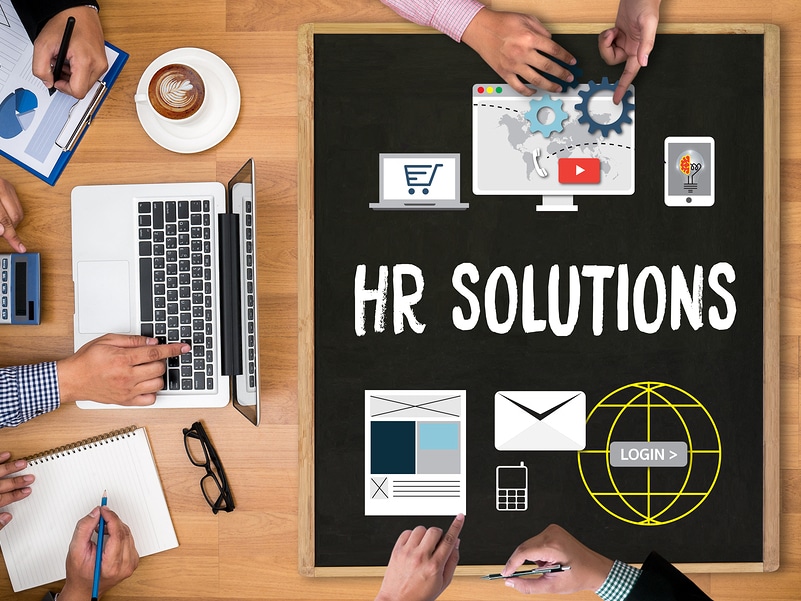How Do I Choose Workforce Planning Software For My Small Business?

How do you choose workforce planning software? Selecting a Human Resource Management system is an important decision. It’s not just the financial commitment. It takes time and resources to implement. You want to make sure it has all the tools you need. How do you make sure everyone will use it? Will you experience an actual, measurable ROI?
Making Sense of Workforce Planning Software: Attack of the Acronyms
Are you new to the HR software world? There are a lot of acronyms to sort through. Let’s talk about a few of them.
Human Resource Information System (HRIS)
Human Resource Management System (HRMS)
Human Capital Management (HCM)
Workforce Management (WFM)
These labels don’t have strict definitions, but here are some generally-accepted descriptions:
What is a Human Resource Information System (HRIS)
The word “information” signifies that these systems were first designed to manage workforce data. This includes basic demographic information as well as job-specific information. Examples are department, position, and pay rate. When these systems were first introduced, many companies were still using paper documents and file cabinets. Electronic document management was a key selling point.
Most HR experts expect an HRIS system to handle recruiting, benefits administration, training, compensation management, and user self-service.
What is a Human Capital Management (HCM) System?
These systems have more capabilities than an HRIS. Most importantly, payroll and time and attendance. Some platforms include an employee scheduling function.
What is a Human Resource Management System (HRMS)
Early systems included all the functions of both HRIS and HCM. When you get to systems this comprehensive, there are many flavors.
The last two acronyms: Workforce Management (WFM) and Human Capital Management (HCM) don’t usually refer to a specific type of software. They describe a company’s strategy to extract maximum value out of their workforce.
As the HR software industry has evolved, the lines have been blurred. There are really no hard-and-fast definitions anymore. Bottom line? Forget about the labels and focus on the functions. What tools are you looking for?
Should I Ditch My Separate HR Systems For All-In-One HR Software?
One of the first questions is, “How big a system do I want?” Should I quit using my current labor management systems to implement a unified solution? What if I like some of the software I have right now?
Human Resource management systems impact hundreds of processes. If you are considering an all-in-one system, see if you can try a demo for a month. It will take that long to get even a basic feel for it.
Define Your Staff Management Software Goals
The first step is to define your goals. They could be general; “improve efficiency” or “reduce labor costs.” Or specific; “speed up time card approvals” or “improve employee access to payroll information.”
Employee self-service (ESS) HR portals handle hundreds of tasks. You can include several objectives and rank them in order of importance.
Talk To Service Providers: Questions To Ask Workforce Planning Software Vendors
In 2019, many labor management software vendors provide a cloud-based product. Some have both an on-premise and cloud-based version.
With cloud-based systems, the software is hosted by the service provider. The vendor maintains the software and, in some cases, provides customer support.
If this is the type of system you are considering, talk to several service providers. Ask them if they have clients with businesses like yours. They can provide insight into how similar companies use the software.
You want to get a feel for how responsive and knowledgeable the provider is. Even high-quality SaaS software is a bad choice if the provider isn’t responsive. Find out when their tech support is available. Is it live support or an email ticket system? Do they offer free training? What set-up is included? Does the software measure productivity? Are there features for your industry?
Talk to existing customers to see if the service lives up to the promises on their website. If you can’t talk to any existing customers, consult labor management software reviews.
How Does Labor Management Software Help With Compliance?
Every business is subject to the Fair Labor Standards Act. Automated timekeeping helps you comply with minimum wage provisions. Plus, you have the records to verify your payroll data.
Overtime trips up many businesses. If you have full-time hourly employees, look for overtime tools in both the scheduler and time and attendance component. Overtime compliance is best managed with a multi-pronged approach. The overtime tools in the time and attendance system are called “schedule adherence” or “schedule enforcement.”
The scheduling tool should prevent you from scheduling employees for more than forty hours a week. Or at least it should alert you while you are creating the schedule. Another type of alert is connected to the time and attendance system. This is a must-have if you have overtime issues at your company. Managers customize the system to send a text when an employee is nearing overtime. This works even if the employee wasn’t originally scheduled for overtime.
Paid Time Off is also a compliance minefield. If you offer it, insist on PTO tracking capability. When a system tracks PTO, it allows employees to monitor it with employee self-service. Plus, leave tracking helps you schedule around vacation requests. If you are going to invest in a labor management system, make sure it has tools for the express purpose of avoiding compliance violations.
Workforce Planning Software Templates
Templates are a nifty time-saver. All-in-one systems like WorkforceHUB from SwipeClock handle all workflows. (WorkforceHUB also has ahead-of-the-curve templates.) These include time and attendance, scheduling, payroll, benefits enrollment, onboarding, engagement, employee information, and performance reviews. Within the modules, there are templates that can be used as-is or tweaked as necessary.
How Much Does Workforce Planning Software Cost?
Most platforms are billed either as a perpetual license or monthly subscription. Purchasing a license is usually used for software housed on your computers. The subscription model is typically used for SaaS (Software-as-a-Service) platforms. These systems are stored in the cloud. A labor management software provider maintains the software and keeps it updated.
Many payroll companies offer labor management software that integrates with their payroll system. If you outsource your payroll, check with your provider to see if they offer additional services. There are advantages to having the same company handle co-dependent functions.
Labor management software saves you money in obvious and less-obvious ways. When planning your labor management software budget, consider overall ROI.
How Does Workforce Planning Software Save You Money?
Improved scheduling lowers labor costs. Automated timekeeping reduces employee time theft. Automation allows a small HR department to handle large workforces. You won’t need to hire additional administrators as your company grows. Speedier (and more effective) onboarding allows new hires to become productive sooner. Project management analytics helps you allocate labor more effectively. The cumulative effect of improved efficiency lowers turnover. All-in-one platforms are a wise investment even if you don’t think you need all the functions.
Simplify HR management today.
Simplify HR management today.
Navigating the Complexities of Healthcare Recruitment
The healthcare sector is renowned for its rewarding nature, offering professionals the chance to significantly impact individuals’ lives by aiding in their recovery from various ailments and conditions. However, for those tasked with recruitment within this sector, the challenges are plentiful. Delve into our in-depth guide for an array of strategies to elevate your healthcare…
Read MoreHow Improving Candidate Engagement Influences the Hiring Process
Applicants invest considerable time, effort, and thought into their job applications. Regrettably, it’s all too common for employers to delay responses, with some failing to provide any follow-up whatsoever. Such practices can have a negative effect on the candidate experience, influencing your organization’s hiring efficiency and reputation. Ensuring a positive experience for candidates is crucial…
Read More





